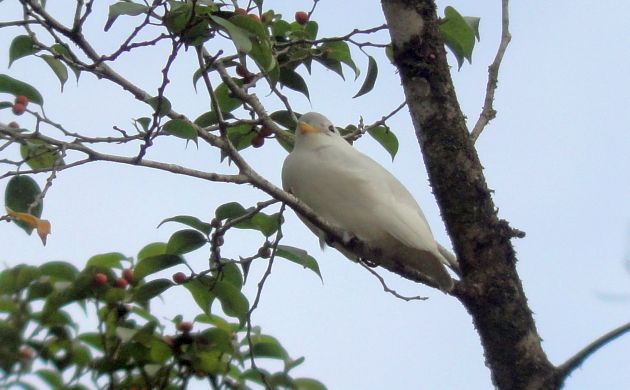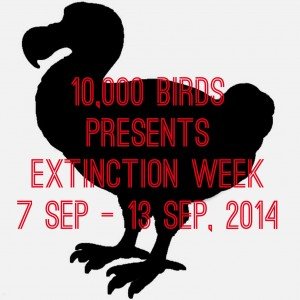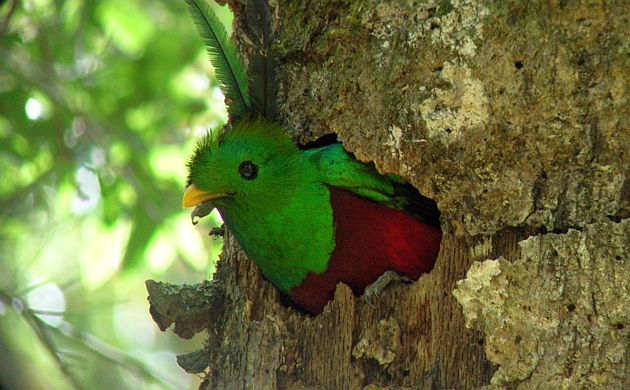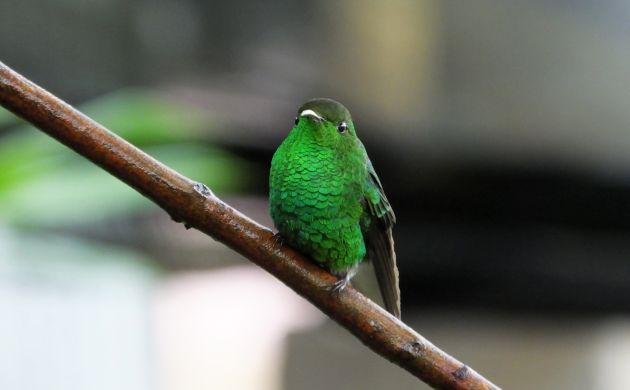
When Costa Rica becomes a topic of conversation, we don’t usually hear the word “extinction” being thrown around. You might hear talk about beaches, zip lines, lack of traffic signs (seriously), and volcano visits but extinction? Come on! Must be a joke, right? But how about when the Costa Rica conversation involves a birder? Instead of going on about zip lines and other modern, adventure tourism attractions, the birding crowd talks about taking photos of Resplendent Quetzals, seeing dozens of hummingbird species, and the seemingly odd absence of raptors in Costa Rica but nope, we don’t really talk about extinction.
Resplendence.
The disappearance of biodiversity seems pretty far off topic in a country with 20% of its territory exempt from alteration (aka destruction) but it wasn’t always that way. Not that long ago, Costa Rica had one of the highest deforestation rates in the world, rainforests were razed to make way for hot and chiggery cattle pasture, and bot flies probably became more numerous than some bird populations. Various bird species continue to be affected by those destructive days of deforestation and the subsequent edge effects but thankfully, protected areas were established before any of the regional or country endemic bird species were gone forever. Some of them are quite rare and endangered but you can still come to Costa Rica to see a Mangrove Hummingbird, marvel over a Yellow-billed Cotinga, and bedazzle yourself with Coppery-headed Emeralds.
Cotinga a la yellow bill.
It’s easy to bedazzle the bins with this one when birding in Costa Rica.
However, you can’t come to this small Central American country to see the following birds because they are gone:
- White-faced Whistling-duck: Yes, this cool looking duck used to build nests, breed, and dabble around the wetlands of Costa Rica and this is why you will see it illustrated in Stiles and Skutch. However, don’t count on glassing one in Costa Rica because no one has claimed this fancy duck in-country for decades (and there aren’t too many places to look for them). A vagrant from northern Colombia isn’t out of the question but we are still waiting for that local mega to happen.
- Orange-breasted Falcon: Since there aren’t any specimens of this regal neotropical Falco from Costa Rica, we actually aren’t even sure if it used to live here. However, if we accept that some old reports were this species and not the very similar and easily confused Bat Falcon, it’s pretty likely that a few Orange-breasteds did hunt for Band-tailed Pigeons, parakeets, parrots, and other birds over the canopy of rainforests at the base of the Costa Rican mountains. As those forests diminished, perhaps habitat and prey for the Orange-breasted would have also declined until there wasn’t enough food to support an already small population. Hope for a vagrant comes in the form of an Orange-breasted Falcon sighting from west-central Panama.
The good news is that these two species have a pretty big range, occur outside of Costa Rica, and could be reintroduced given the right conditions (like reforesting more of the Caribbean slope and restoring more wetlands). For the Alfaro’s Hummingbird Saucerottia alfaroana, though, we don’t know if it’s gone or what it was in the first place! This Costa Rican enigma came to light after being collected by C. F. Underwood on Miravalles Volcano in 1895. So far, the story about this strange bird ends right where it started because it hasn’t been seen since. It seems different enough from Indigo-capped Hummingbird to be a stray of that Colombian endemic, and a good hybrid hypothesis has been elusive. Searches haven’t turned up any suspect Alfaro’s either but maybe we just need to look more, or compare its DNA with other, known hummingbird species. It is a definite relief to know that Costa Rica has been spared a Passenger Pigeon but we can’t let that sigh of relief wipe away the valid worries about our other, extant, seriously threatened bird species. Crested and Harpy Eagles stand out as birds that seem to still be around but in such low numbers that those monster raptors could easily up the extirpated list by two. Bare-necked Umbrellabird and Yellow-billed Cotinga are two other species in positions that are even more precarious. Although those two avian stars still occur in Costa Rica and western Panama, their numbers are low, and they don’t have the benefit of living anywhere else. Hopefully, we can help them in time.
…
Extinction is forever. A species, wiped off the earth, never to exist again. What a horror! What a disaster! What a wrong!
 It is correct, of course, to think of extinction this way during the Holocene Extinction, which we are living through right now. After all, the extinctions have occurred, are occurring, and will occur because of us, people. We have so altered the earth – pumping pollution, moving species around, destroying ecosystems – that many species, dependent upon ecological niches or simply unprepared for an onslaught of unfamiliar organisms with which they did not evolve, have no chance. It is depressing and angering and just wrong.
It is correct, of course, to think of extinction this way during the Holocene Extinction, which we are living through right now. After all, the extinctions have occurred, are occurring, and will occur because of us, people. We have so altered the earth – pumping pollution, moving species around, destroying ecosystems – that many species, dependent upon ecological niches or simply unprepared for an onslaught of unfamiliar organisms with which they did not evolve, have no chance. It is depressing and angering and just wrong.
But, in the wider view of things, extinction is necessary. It is what drives evolution. Extinction is what befalls the species that fails to adapt, to survive, to thrive. Most species go extinct. That is just the hard, cold reality of nature, red in tooth and claw.
This is not to say that we should sit back and let the Holocene Extinction continue. No! We must fight to save every species we can, every ecosystem, every niche.
It is the 100th anniversary of the extinction of the Passenger Pigeon, once one of the most abundant species in the world. In order to raise our awareness, to remind us of what we have lost, and to inspire us to fight for Every. Single. Species. we are hosting Extinction Week here on 10,000 Birds from 7 September to 13 September. Come back, click through, read, learn. And get angry and take action.
…















A sobering reminder that extinction could occur anywhere. And, beautiful Quetzel photograph.
I was recently visiting in Cosata Rica and saw a Blue Parrot. My friend told me that it is sappers to be extinct and if someone sees one, that they need to report it. I saw it near Tambor on the Nicoya Pennensula. Do you know if this is true and to whom I should report it?